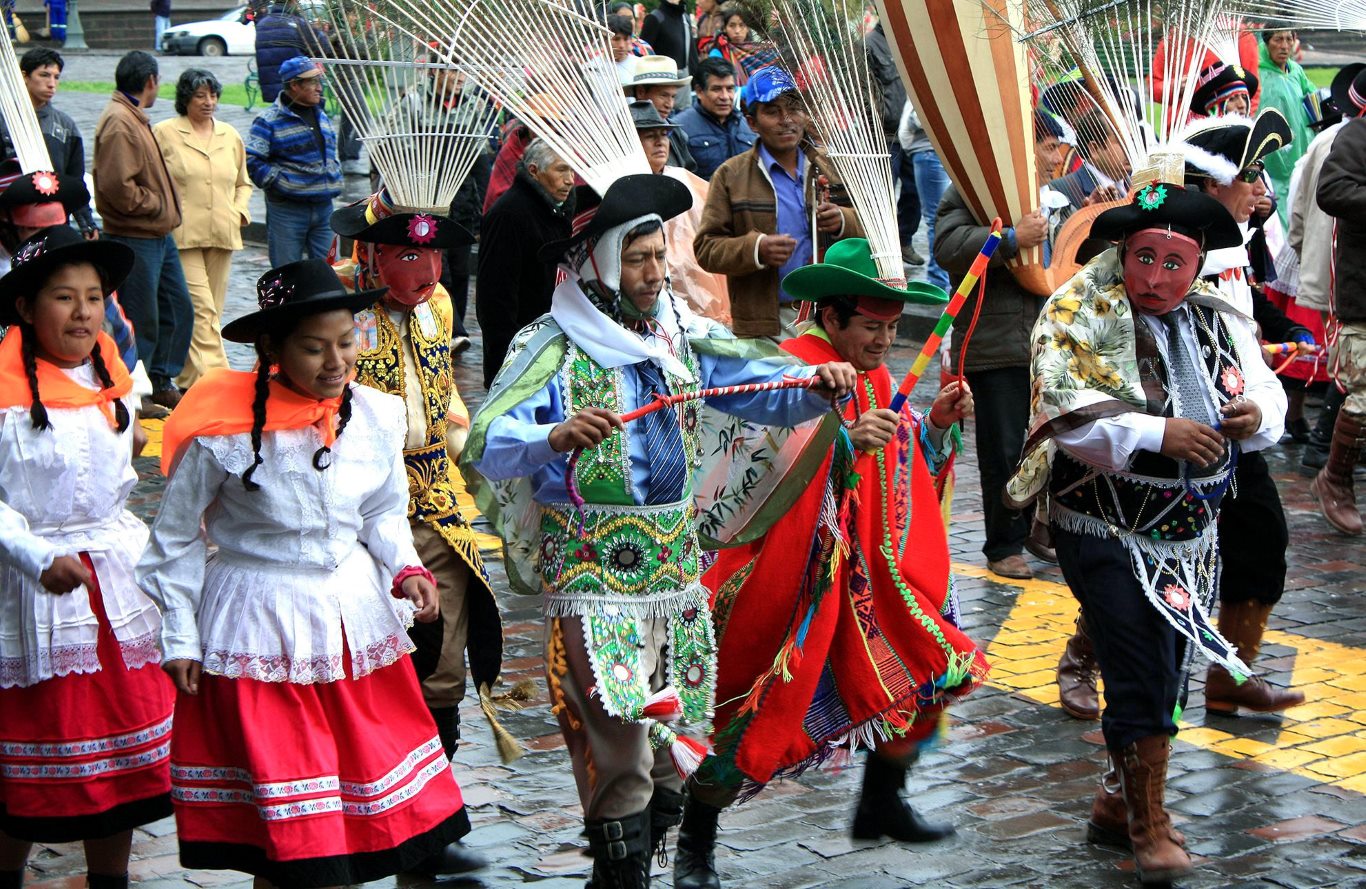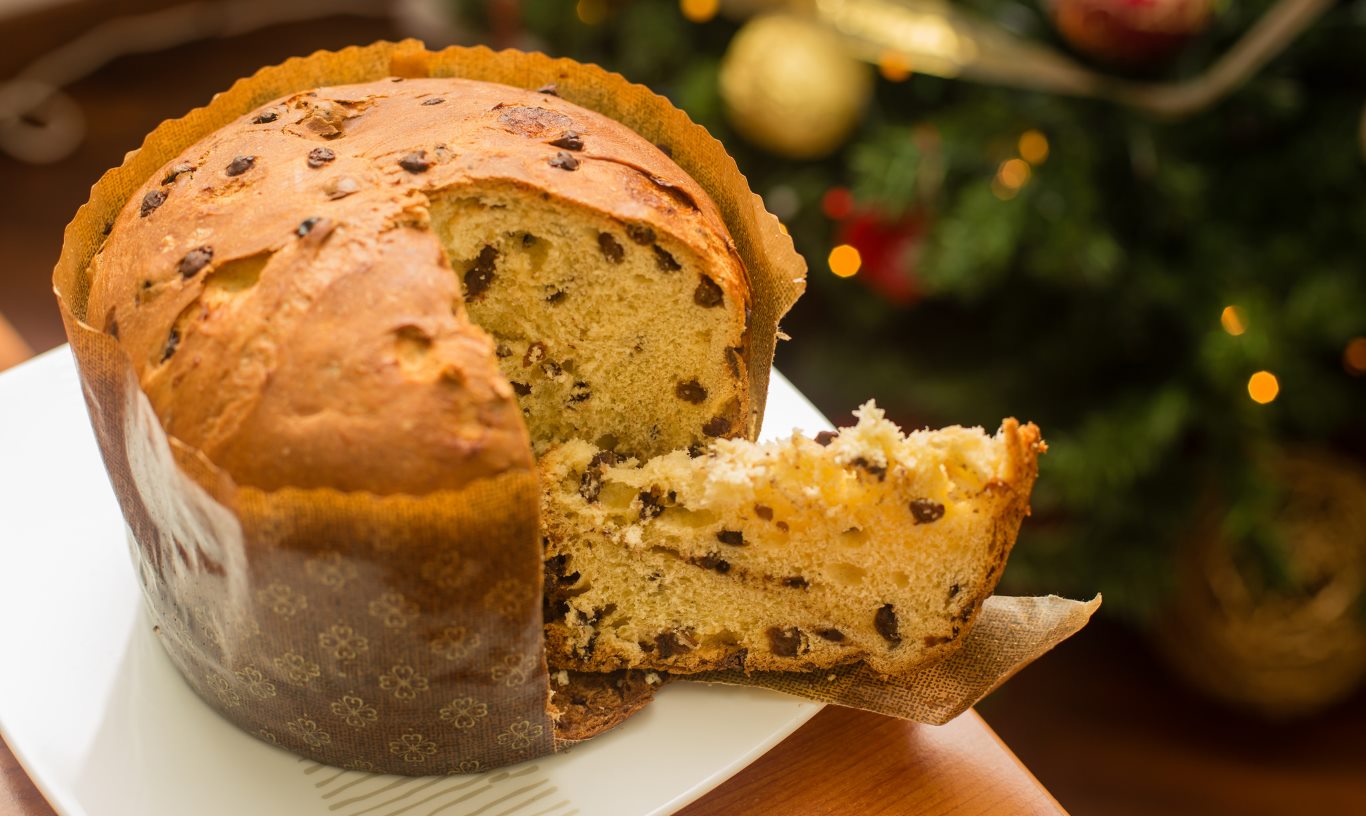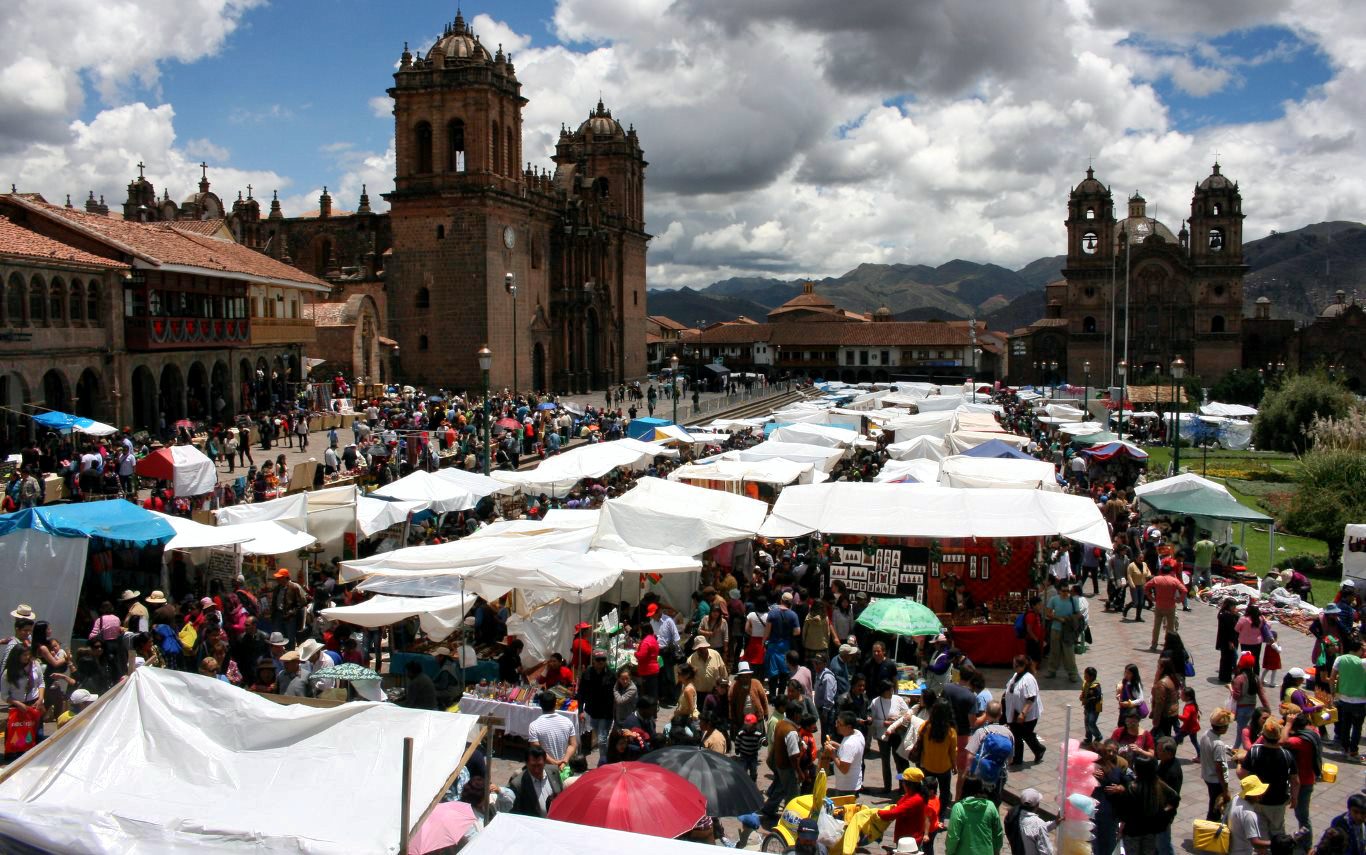
A Christmas Day parade in Cusco, Peru. Photo by Vlad Podvorny, flickr.com.
If you’ll be spending Christmas in Peru, now’s the time to catch up on the country’s Christmas traditions, its festive food and drink, and other common Christmas customs.
You might also be wondering where to spend Christmas in Peru: Which towns and cities offer the most festive and authentic Christmas experiences — and which have the best parties? Read on for all this and more…
A Brief History of Christmas in Peru
The first Christmas in the Americas was a bit of a letdown. On December 25, 1492, Christopher Columbus managed to run one of his ships, the Santa Maria, aground while exploring the coast of Hispaniola (present day Haiti). He had to abandon it on Christmas Day, and left behind 39 men who built the settlement of La Navidad. All in all, not a great way to spend Christmas.
When exactly the first Christmas was celebrated in Peru is open to debate. But Francisco Pizarro arrived in Peru in the 1530s, and defeated and captured the Inca Atahualpa in November 16, 1532. It’s safe to assume that he and his small band of conquistadors probably celebrated — or at least observed — Christmas the following month.
In the centuries that followed, Christmas remained one of the principal Christian festivals in colonial Peru and then independent Peru. Until relatively recently, Christmas in Peru was a highly religious affair, with religious festivals taking place throughout December and ending in the first week of January (beginning with Inmaculada Concepción on December 8 and running through until Epiphany on January 6).
Santa Claus first arrived in Lima at the end of the 19th century. For religious zealots, things were all downhill from there. It wasn’t long before Christmas became increasingly more commercialized. That said, Christmas in Peru isn’t as overly-commercialized as in, for example, the USA or UK. Jesus is holding his own against Santa Claus, and gift-giving (and receiving) still isn’t the be-all-and-end-all of Christmas in Peru.
Christmas Customs and Traditions in Peru
For many foreign travelers, the most obvious difference between Christmas in Peru and back home is that Peruvians celebrate Christmas on December 24 rather than December 25.
In Peru, as in much of Latin America, December 24 is Nochebuena — literally the “Good Night.” The more religious families start the night by going to a Misa de Gallo (literally “Mass of the Rooster”), a mass held in churches and cathedrals throughout Peru on Christmas Eve. The Misa de Gallo normally starts around 10 p.m. Once it’s over, everyone can hurry home to start the festivities.
Midnight is when everything really gets going. A barrage of fireworks light up the sky at the stroke of midnight, and people stand outside their homes to watch the display and greet their neighbors. Once that’s done, it’s time to head inside to eat the Christmas dinner (see below) and open gifts that sit beneath the tree.
Christmas trees are now common in Peru, but the nativity scene is a more traditional Peruvian Christmas decoration. Known as belenes, pesebres or nacimientos, these nativity scenes feature models of all the classic figures, including Mary and Joseph, the Three Wise Men, and a few goats or cows (in Peru, the biblical barnyard animals might be replaced by alpacas and llamas). The manger traditionally sits empty until the stroke of midnight, at which time a representation of the newly-born baby Jesus is put in his rightful place.
Gifts are typically exchanged and opened at or just after midnight, depending on the family and the patience levels of their kids. Some households might eat first, others after. In some Andean communities, gifts are opened on January 6 during Epiphany (and the Bajada de Reyes), in which case the unfortunate kids have to wait even longer.
Little children are sent to bed shortly after midnight, but many adults continue drinking until the early hours, often past sunrise.
December 25 — unsurprisingly — is a day for sleeping late, overcoming hangovers, and playing with new toys. The towns and cities are normally quiet, apart from bands of roving kids who still have leftover fireworks to set off.
Panetón, one of the traditional Christmas foods in Peru. Photo by N i c o l a, flickr.com.
Christmas Food and Drink in Peru
The traditional Peruvian Christmas dinner normally features roast pork (often lechón, or suckling pig), turkey or, less traditionally, chicken. Accompaniments often found on the Christmas table include applesauce, tamales, some kind of salad, puré de papas (potato puree) and a rice dish.
The most common sweet item eaten in Peru for Christmas is panetón, a sweet bread loaf filled with raisins and candied fruits. Panetón originally came to Peru from Italy and started becoming a popular Christmas food in the early 1900s. You can buy panetón in Peru all year round, but stores are absolutely full of them in the run-up to Christmas (and for at least a month after Christmas).
Panetón goes perfectly with hot chocolate, a classic Christmas drink in Peru. You can buy bars of chocolate in Peruvian stores and markets specifically produced for making hot chocolate. Cloves and cinnamon give the hot chocolate extra zip (and, if you’re like me, you might find a glug of whisky or rum makes it even nicer). You’ll also see chocolatadas taking place during the Christmas period. These are social events where people gather to drink hot chocolate, with the proceeds sometimes going to local causes (such as an orphanage), or with poor kids/street kids invited to take part (and receive donated gifts).
In terms of Christmas alcohol, most families will have at least one crate of beer on hand (more likely five), with maybe a few pisco sours being passed around. For something more Christmassy, learn how to make algarrobina, a classic Peruvian pisco cocktail similar to eggnog. Midnight toasts might involve champagne, sparkling wine, or dubious gassy cider.
Where to Spend Christmas in Peru
Where to spend Christmas in Peru depends on what you’re looking for. For rich traditions and colorful processions, then Cusco and Puno are hard to beat. For parties, parades and plenty of drinking, Lima is certainly worth considering (but only if you like big cities).
Arequipa is a happy mix of partying and parades, and might be a good option if Lima’s too big and Cusco’s too touristy. For a relaxing Christmas in northern Peru, Chachapoyas seems like it could be a good balance of festive cheer, picturesque streets and friendly people (as long as it’s not raining every day).
As someone who lives in the Peruvian jungle (Tarapoto, to be precise), I find it hard to recommend any jungle cities in Peru for Christmas. I’m English, so for me Christmas should be cold. In the 33°C heat and humidity of the jungle, Christmas just doesn’t feel right, and Santa looks way to sweaty.
But if you hate Christmas and want to avoid religious parades and excessive shopping, then the jungle might be just the thing — especially if you go on a multiday trek in the deep jungle, in which case you can avoid Christmas altogether.
The Santurantikuy crafts fair on Christmas Eve in Cusco, Peru. Photo by Renate Zindel, flickr.com.
Other Christmas Events in Peru
Some other notable events taking place in Peru on or around Christmas include:
- Santurantikuy — This vibrant crafts fair takes place every year on December 24 in Cusco’s main square. Local artisans gather from across the region to sell everything from sculptures to religious icons to knitted hats.
- Bajada de Reyes — January 6 is the Bajada de Reyes, which ties in with Epiphany. Traditionally on this day the decorations are taken down and the nativity scene is put away until next Christmas. In Lima, three mounted police, dressed as the Three Wise Men, ride through the city carrying gifts, which they take to the Municipality of Lima on the Plaza Mayor.
- Peru Christmas Fights (Takanakuy) — Yes, you read that correctly. Every year on December 25 in the Chumbivilcas Province near Cusco, local residents fight each other to settle old scores (or just to prove who’s toughest). Copious amounts of alcohol and plenty of dancing ensure that the combatants stay on reasonably good terms after the fist fight (although I’m sure some grudges remain unresolved).
How to Say Merry Christmas in Peru
Simple: “¡Feliz Navidad!” which means “Happy Christmas!” Throw in a kiss on the cheek and a warm hug and you’ll be all set for the festivities.







Share This
Thanks for commenting! If your comment requires an answer, I'll try to reply as soon as possible. In the meantime, please share this post with your friends.